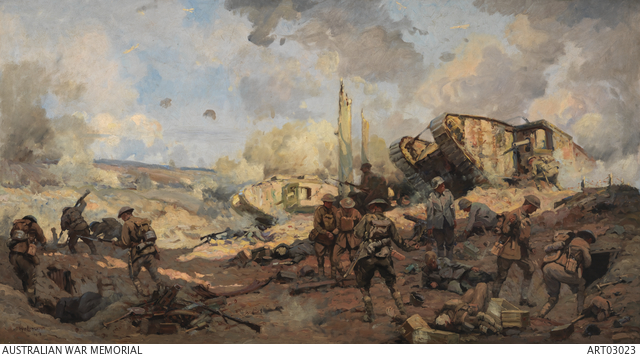Following the success at Mont St Quentin in early September 1918, the allies began planning a major offensive on the Hindenburg Line to begin in late September 1918. It was hoped this attack would weaken the German Army and therefore bring an end to the war. The Hindenburg Line was the last and the strongest of the German Army defence. It consisted of three well defended trench systems which were established in 1917.
The offensive consisted of three separate attacks. The first attack on the 18th September was a preliminary attack when Australian troops reached the first part of the line. Monash's troops supported by a heavy artillery barrage attacked the heavily fortified German defences and machine gun posts. Using only eight tanks they broke through German positions and took 4,300 prisoners. Although they suffered a 1000 casualties this was considered slim when compared to the German losses.
The second attack which began on the 29th September finally broke through the line. Australian and American troops were given the responsibility of spearheading the attack. The plan was for the troops to break the defences of the line in its centre. They attacked a heavily defenced sector at Bellicourt with tanks, artillery and aircraft working in unison. The fighting between the opposing forces was a real struggle with the fighting lasting four days with heavy losses.
Eventually the allies were able to break through the third and final part of the Hindenburg Line and the Germans were forced to fall back. In this third attack the troops captured the entrance to St Quentin canal tunnel. Inside the the tunnel the allies found a kitchen with German bodies inside from a previous attack. The Hindenburg Line was finally broken bringing an end to trench warfare and the allies had broken through the largest trench system on the Western Front.
 |
| Ballarat Courier 21 September 1918, p.3 |
|
|
 |
| Ballarat Star 1st October 1920, p.1 |
|
|
 |
| Breaking the Hindenburg Line By Will Longstaff. Courtesy Australian War Memorial |




No comments:
Post a Comment